699 Search Results for communication book
June 22, 2012
by Carole Zangari -
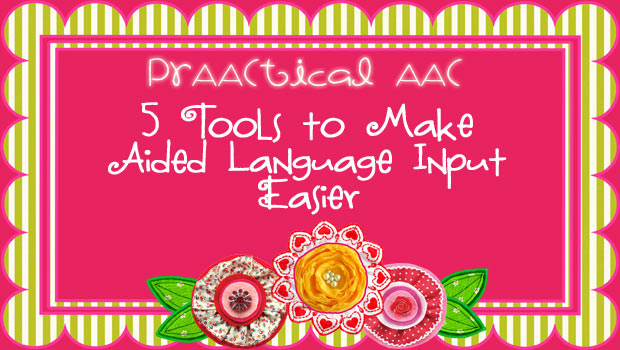
If you’ve been following our blog, you know that we consider aided language input to be a pivotal skill for any SLP working with a client who uses AAC. You can read more about aided language input on our earlier posts, but the shorthand version is this… – People learning AAC need to see/hear competent models of their AAC system frequently. As a clinician, you have to ‘speak AAC’ by using their communication tools or a reasonable facsimile. – The more WE use the communication boards, books, SGDs, and apps, the more the learner will, too. Sometimes, your finger is all you need. But what if you have a poster-sized wall mounted AAC display that you are using to ‘talk’? What if the AAC learner needs some help to notice what you are doing? Here are some tools that can help. – 1. Maglite or Laser Pointer (used with safe... [Read More...]
June 16, 2012
by Carole Zangari -
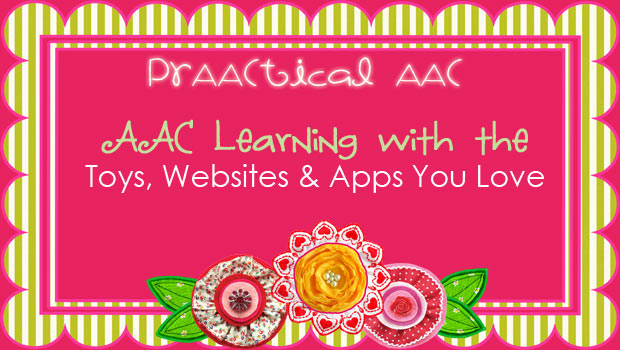
One of the best things about being an AAC interventionist is that it allows you to play and find creative ways to teach and practice language. In this post, we’ve compiled some of our favorite posts about teaching core vocabulary, early communicative intents, and more advanced language skills to people learning AAC. – – Early Language Magic Moments with Toca Store (app) Magic Moments with Toca Boca Doctor (app) PrAACtical Play with Playskool Busy Gears (toys) Magic Moments with Stop and Go (app) HijAACked! Putting an AAC Twist on The Hallelujah Flight (free e-book, website) Magic Moments with Disneyland Explorer (app, free) Magic Moments with Painting with Time (app, free) 5 Apps to Tempt Commenting and Other Language Functions (app) – More Advanced Language Magic Moments: AAC Intervention with BrainPOP (app and website) Magic Moments with Qwiki (app and website) HijAACked! AAC & Anti-Bullying with Stand Tall, Marylou Melon (free... [Read More...]
June 2, 2012
by Carole Zangari -
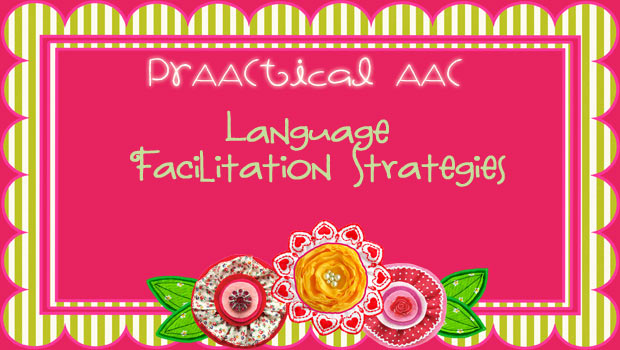
Well, it’s Week 4 of the new semester, and in our AAC classes, we’ve been talking a lot about how language is represented and organized in communication boards/books, SGDs, and AAC apps. We’ve talked about the pros and cons of representing language in various ways and discussed the options for setting up displays so that people can easily access the words they need. At this point, we know how to choose appropriate symbols, select appropriate vocabulary, and arrange it in an appropriate format. In short, we know how to put language ‘in.’ Now comes the hard part: Getting it out. How do we get people to actually use the language that’s been so carefully stored in the no-tech, low-tech, and high-tech AAC tools? Our June Strategy of the Month is about techniques for language facilitation. If you’re an SLP well-versed in language therapy with speaking children, these posts will cover... [Read More...]
May 31, 2012
by Carole Zangari -
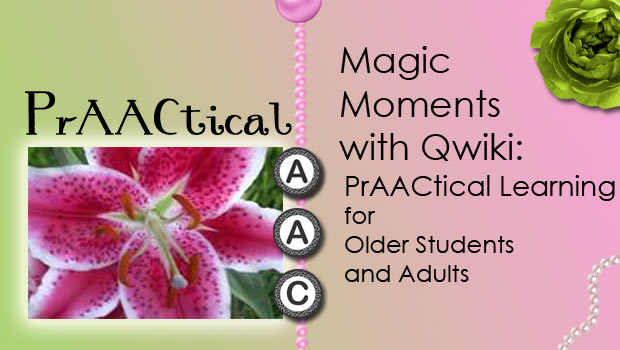
Magic Moments is an occasional series that discusses prAACtical ways of using favorite toys, games, apps, and selected websites for language and literacy learning. Our last Magic Moments post featured Toca Store, an app for children, so this time we raised our sights to address an older demographic. There are fewer age-appropriate, interesting materials designed especially for the AAC and learning needs of this age group so we are always on the hunt for creative ideas. Since we’re sharing digital curation tools as part of our May Strategy of the Month, we thought this would be a perfect opportunity to talk about ways to use Qwiki with clients who use AAC. and websites for communication learning. – Qwiki is an aggregation tool that combines video and web interactivity into a brief multimedia presentation. In their reference site, Qwiki allows you to enter a search term and get an interesting overview of that topic with images,... [Read More...]
May 31, 2012
by Carole Zangari -
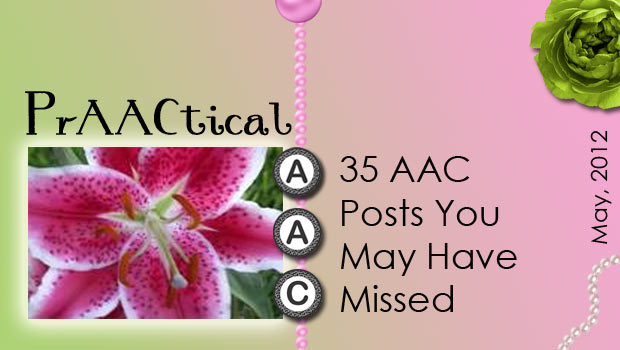
The Fives 1. 5 Sites for Professionals who are Supporting Military Families with Special Needs Children 2. 5 Charitable Programs that Support Funding for Communication through Mobile Devices 3. 5 Sites for Tools & Tips on Self-Calming & Behavior Regulation 4. Five (More) Resources for Supporting Friendships in Individuals Who Use AAC PrAACtical Thinking Updated: 59 Free and Lite AAC Apps Magic Moments with Qwiki: PrAACtical Learning for Older Students and Adults PrAACtical Teaching PrAACtical Alert: How Your Junk Drawer Can Help People Who Use AAC Magic Moments with Toca Store Random App of Kindness Sticky Situation AAC ASD App From the Ivory Tower PrAACtical Resources: Evidence-Based Practice Maps PrAACtical Suggestions: 10 Ways to Help Families Make Informed Decisions about AAC PrAACtical Suggestions: How to Get Started with A New AAC Client, Part 1 International Cri du Chat Awareness Week Saying ‘I Love You’ on Mother’s Day iTaalk for Better Hearing and Speech Month... [Read More...]
May 30, 2012
by Carole Zangari -
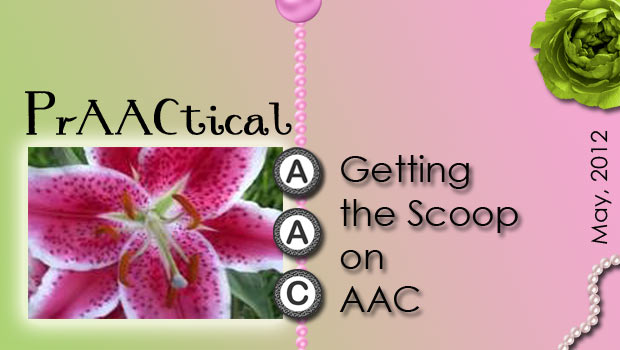
When I first heard about curation being the next big thing on the internet, I had a hard time seeing how I would have time to get involved. Less than a year later, I can’t conceive of being on the internet without my curation tools. Every day, something comes up that I want to store on a curation site. And it’s almost every day that I send someone to those places for a specific tool, video, article, etc. – In addition to Pinterest, which we blogged about earlier, we are frequent users of Scoop.It and LiveBinders. Each one has its unique properties and so, they are each useful for different things. – Scoop.It is a pictorial magazine where you can collect and share websites related to topics of interest. Unlike Pinterest, with Scoop.It, you can add things that do not have a sizable image. Anyone can view Scoop.Its, but if... [Read More...]
May 19, 2012
by Carole Zangari -
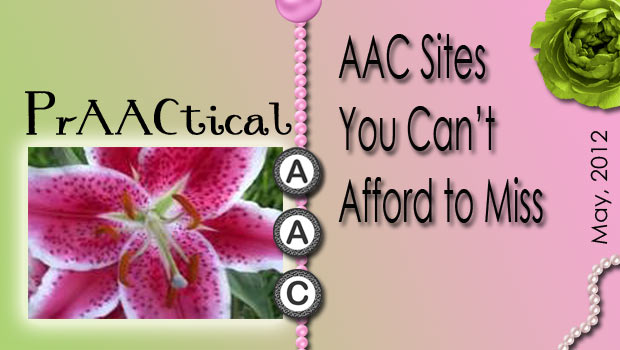
We continue to celebrate ASHA’s Better Hearing and Speech Month with a focus on SLPs, specifically, strengthening our AAC connections in this digital world. This week we focus on websites that we find useful in our AAC work with graduate students, colleagues, clients, and families. – Ten years ago if you would have told us that sharing a list of useful AAC websites would seem dated and ‘old school,’ we would have either burst out laughing or withdrawn into a catatonic state. Now, however, it does seem a little old-fashioned to share a list of websites. Here is our starter list of sites to visit, explore, and bookmark. – 1. Resource and Training Material: The breadth, depth, and quality of the offerings by SET BC makes it one of our most frequented online resources. Downloadable AAC materials? Check! Curriculum supports? Got it! Accessible books? Yup! Training resources? Just wait ‘til... [Read More...]
May 17, 2012
by Carole Zangari -
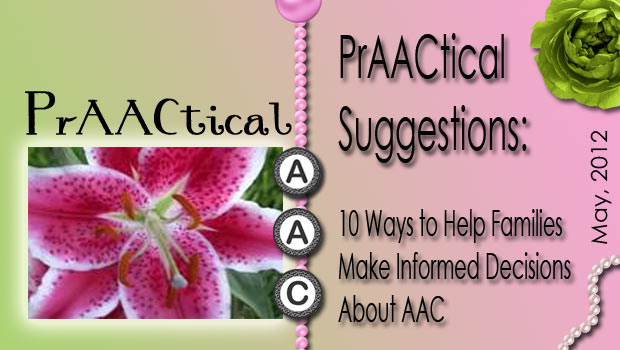
– In one of my AAC classes, we’ve been talking about how to help families make informed decisions. To do that, they need to have solid information presented clearly, in digestible bites from a trusted source. When we don’t have that information, it is easy to fall prey to fads and/or adopt a herd mentality and do what everyone else is doing. Here are some suggestions for supporting families through the AAC decisions they will need to make. – 1. Have direct conversations about the pros and cons of the available options. For example, if the family expressed interest in an iPad with AAC apps over a full fledged SGD, then we’d have to be prepared to reiterate the merits and drawbacks of each. 2. Share a process for making AAC decisions rather than attempting to take the decision out of their hands. For example, you may want to encourage... [Read More...]
May 14, 2012
by Carole Zangari -
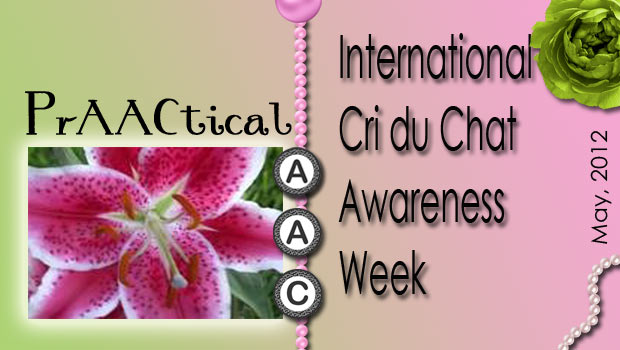
– Today’s post is in honor of the first ever International Cri du Chat Awareness Week and the lovely young lady pictured here (as well as in the brochure linked below). – Cri Du Chat Syndrome (CdCS, also called Lejeune’s syndrome and 5p deletion) is a low incidence genetic disorder caused by a deletion on the short arm of chromosome 5 (5p-). Most children with CCS experience general developmental and communication delays, some of which are quite significant. They tend to have strengths in receptive language. Their speech is often marked by frequent articulation errors, small phonetic inventories, and restricted syllable shapes. Many infants and children with CdCS also have feeding and swallowing difficulties. Children with CdCS have a higher co-occurrence of cleft lip/palate. – 1. 5p- Society (US) and the Annual Conference: Positive Attitude, Reaching New Heights (July, 26-29 in Denver, CO). This group also has a network of... [Read More...]
May 8, 2012
by Robin Parker -
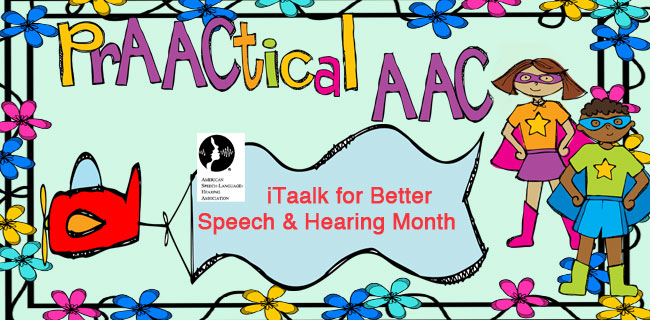
In honor of Better Hearing and Speech Month, we wanted to share about iTaalk, one of the groups/pages on Facebook that we love. We had the pleasure of meeting (in person) the people who founded iTaalk. Wow- really special people! They work tirelessly to promote good teaching behind every app for communication and learning. They have programs to help families who need resources to begin teaching with technology, programs to help obtain more technology and try to ensure that quality teaching information goes with each app. They work to bring schools and families together with technology. You can expect to find great app lists, funding ideas, and much more from iTaalk. So check out iTaalk on Facebook and iTaalk website and enjoy!









